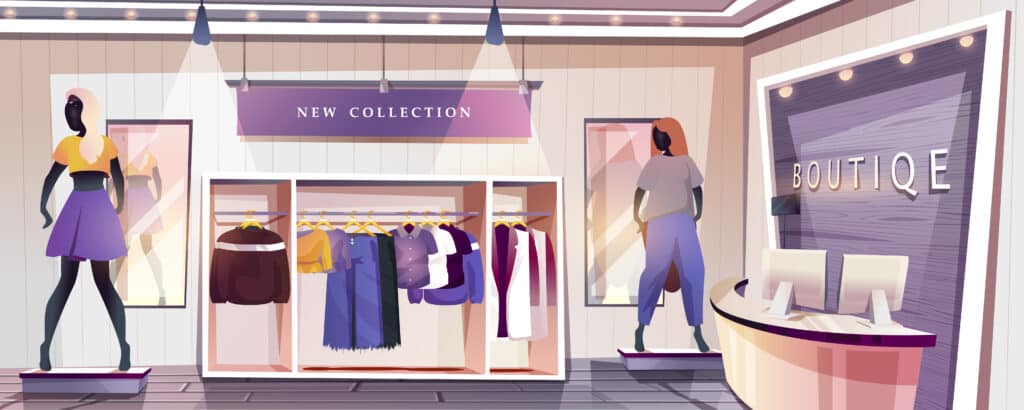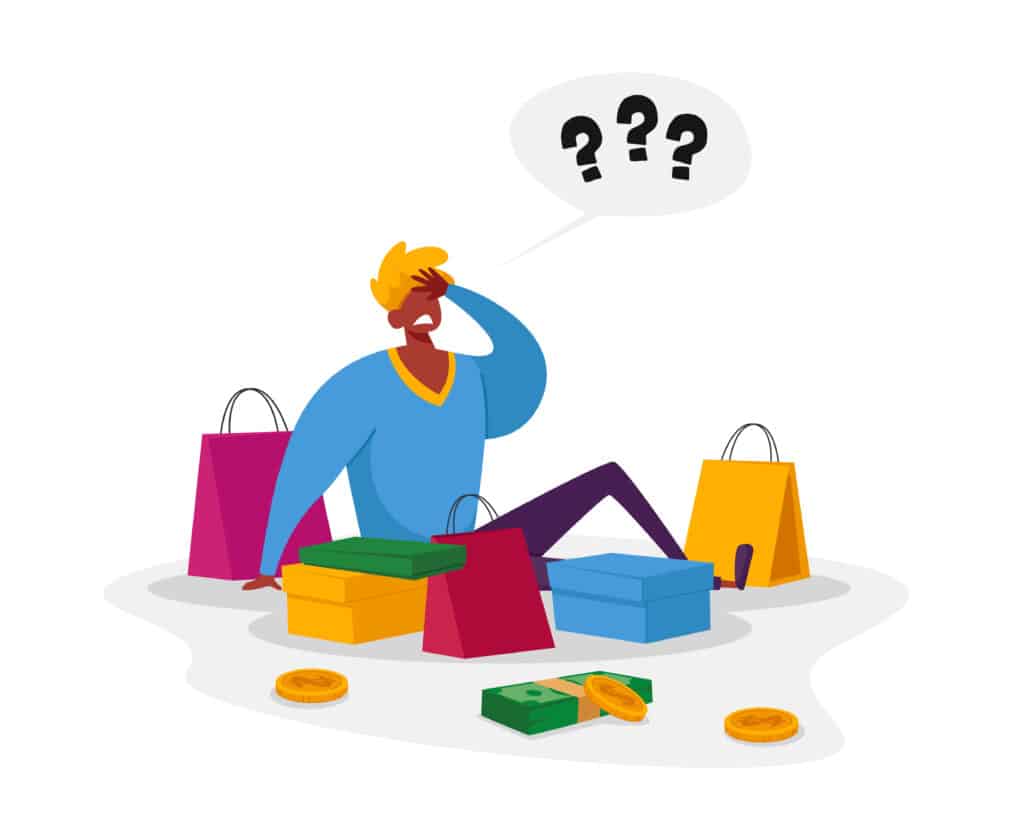Store design isn’t just about aesthetics–it’s a psychological game of chess played between retailers and consumers, where the ultimate goal is conversion. This article delves into the intricate world of store design, unraveling its importance in driving sales, enhancing customer experience, and ultimately shaping retail success in both physical and digital realms. Buckle up as we guide you through captivating aisles of creativity infused with business acumen.
The Importance of Store Design
Retail store design is more than just looks. It’s a tool to boost sales. Every detail, like lighting and shelf height, is carefully planned to make people want to buy. Smart retailers are creating experiences in their stores to attract customers who make emotional buying decisions. This makes customers happy and more likely to come back and tell others about the store.
Defining Store Design: Key Concepts
To define store design accurately, one must consider it as more than just an aesthetic endeavor. It’s a strategic discipline that intertwines with psychology and marketing principles. Strikingly, it’s accountable for shaping the customer’s journey within the physical boundaries of a space while reflecting the company’s brand identity and promoting its diverse products or services harmoniously.

At its core, effective store design is predicated on two central components: visual merchandising and layout planning. The former entails capturing customer attention via enticing displays, inspiring representations of products and creative use of colors & lights – essentially initiating silent dialogues with customers’ senses. Concurrently, layout planning guides this dialogue by creating seamless navigation pathways optimizing product visibility and fostering impulse buying decisions. Garnering a deeper comprehension of these key aspects can transform ordinary spaces into extraordinary shopping environments that aren’t just places to buy, but captivating experiences to cherish!
The Role and Influence of Store Design
Store design is a silent salesman, astutely drawing in customers and guiding their purchasing behavior without them even realizing it. Store design can guide shoppers to popular products, create emotions that boost sales, and use themed displays to tell stories for the target audience. The store layout is carefully planned to encourage customers to interact with products and increase sales.
The colors, textures, lighting – they all contribute to not just luring customers in but also prolonging their stay, resulting in additional browsing. Store designs are now being psychologically calibrated to tap into consumers’ subconscious minds encouraging impulse purchases. A well-designed retail space balances function with wonderment; While one ensures efficiency of operations and consistency of customer experience across all stores or franchises–the other brings about excitement and emotional connections encouraging frequent visits. So yes, shop layout isn’t just aesthetics–it’s strategic brilliance!
Elements of Effective Store Design
The strategic use of visuals in store design can significantly enhance a customer’s shopping experience, leading to increased sales. One critical aspect is the careful selection and arrangement of color tones which impact shoppers’ moods and responses. Consider how bright colors may energize customers, shaking off any lethargy that hampers their shopping spirits. Alternatively, the strategic use of calming blues or earthy greens can put shoppers at ease and foster an atmosphere conducive for browsing and purchasing.
Store layout also plays a pivotal role in attracting and retaining customers. An organized space with clear pathways encourages comfortable navigation through product displays. Creating focal points throughout the store with signature items can spark curiosity, guiding customers on an engaging journey through your merchandise stories. The perfect blend of these elements makes every visit memorable while subtly encouraging consumer habit formation around your brand.
Case Studies: Successful Store Designs
Apple is known for its simple and iconic store designs that match their products. Their stores are not just for selling things, they are also about creating an experience for customers. They use glass walls, natural wood, and open layouts to encourage people to interact with the products.
Anthropologie also has creative store layouts that are different in each location. They reflect the local culture while staying true to the brand. For example, they use reclaimed wood shelves for candles and vintage dishware, and arrange clothes by color to make it feel like a treasure hunt. This makes shopping there an experience, not just a task.
These cases underscore the vital role of thoughtful store design in shaping consumers’ shopping experiences and amplifying ultimately sales volume. It goes beyond aesthetics; it’s about creating spaces where branding spirit lives and breathes every second.
Common Mistakes in Store Design
When aspiring to create successful traffic flow in your store, it’s essential not to ignore customer shopping habits. Ignoring the Decompression Zone is a notable mistake many retailers make. This is the first area customers step into when entering a shop and it’s where they subconsciously decide on their perception of your store’s value. Failing to strategically design this area can result in missed sales opportunities.

A common misconception is that cramming as many products as possible onto your shelves increases chances of sales. On the contrary, overcrowded displays not only present difficulties for shoppers trying to locate items but also emit negative psychological effects relating to clutter and chaos, leading to reduced buying intention. Balancing product density with aesthetically pleasing visuals creates an effective shopping environment and encouraging purchasing behavior.
Future Trends in Retail Store Design
As we eye the horizon of retail store design, a major trend casting a vibrant shadow over the future is hyper-personalization. With data-driven insights and artificial intelligence at their disposal, retailers can now tailor their stores to produce unique shopping landscapes. Imagine entering a store that evolves with your preferences, introducing you to new merchandise based on your browsing history or presenting thematic layouts synchronized with festive seasons or trending pop culture events. This personalized approach not only amplifies customer engagement but also infuses life into the brick-and-mortar experience.
Phygital stores are a new trend in retail that combine physical and digital experiences in one space. These stores go beyond just offering free Wi-Fi and aim to enhance the shopping experience with interactive features like AR VR-enabled trials and smart mirrors that give fashion advice in real-time. The focus is on creating an immersive experience for consumers, rather than just making sales.
Conclusion: The Impact of Thoughtful Design
Undoubtedly, thoughtful design has a domino effect that extends well beyond aesthetics. It subtly fosters an inviting environment that stimulates customer interaction with products while underlining the essence of your brand. By meticulously planning layout, color schemes, lighting, and display setups you shape not only the visual appeal but more importantly the emotional narrative of your store.
The impact it has on consumer decision-making is striking – influencing both their dwell time and purchase decisions. In sum, when design becomes deliberate every nook and corner tells part of your brand story generating emotional connections with clients. Henceforth, as technology continues to evolve transactional retail spaces into experiential ones – attentive consideration towards thoughtful design can very much be the differentiator between mere store visits and meaningful shopping experiences.
Working with United Banc Card of TN
If you find yourself wanting to conquer your restaurant, retail shop, look no further thanUnited Banc Card of TN. With their innovative solutions and trustedPOS System services, they will guide you towards financial success. Whether you are asmall business owneror an individual looking to manage your finances better, United Banc Card of TN has the tools and expertise to help. Call us today @615-476-0255


